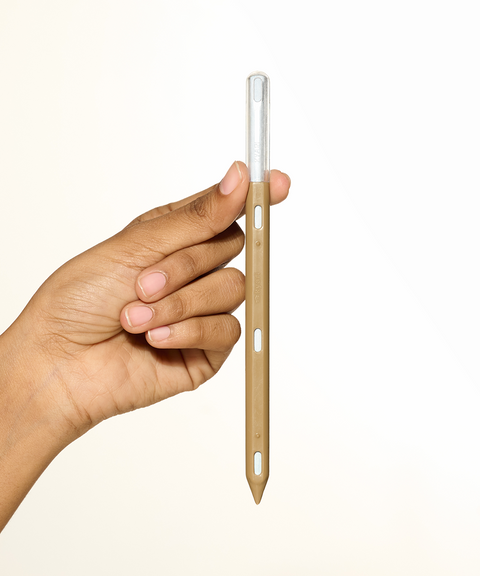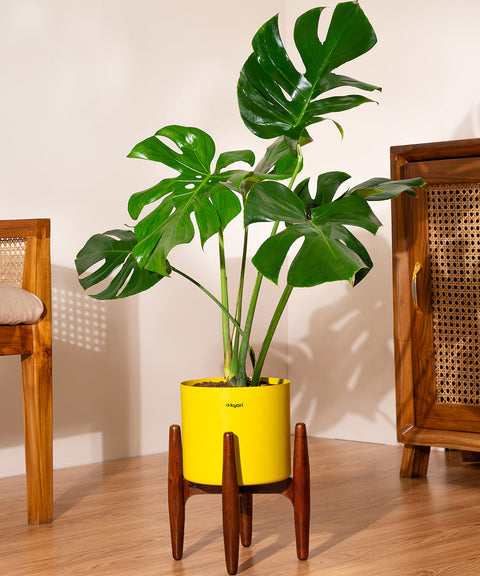Who wouldn't want a burst of colour and a sweet fragrance in their garden or balcony? Well, achieving just that with Plumeria Rubra, isn't as challenging as you might think.
Flowers have always been the best way of brightening up our lives, and today, we're going to talk about a floral beauty that is bound to captivate your heart - Plumeria Rubra. This vibrant and enchanting shrub, also known as Frangipani, Yes Plumeria's botanical name is Frangipani, is a treat for all the senses. With its lovely blossoms and intriguing history, it's no wonder that Plumeria Rubra has garnered a special place in the hearts of flower enthusiasts worldwide.
But how do you grow and care for this exotic beauty? Let's dive in and unravel the secrets of nurturing a thriving Plumeria Rubra plant.
What is the Origin and Significance of Plumeria Rubra?
Plumeria rubra, also known as Frangipani, originates from warm regions like Mexico and Venezuela but is now found in many tropical places worldwide. Loved for its beautiful flowers and delightful fragrance, the Plumeria flower holds special significance in various cultures. In Hawaii, it's used to make necklaces, symbolizing happiness and charm, while in places like Thailand and India, the Plumeria flower is associated with religious rituals near temples. People also use it in traditional medicine for its healing properties.
Apart from cultural importance, Plumeria rubra is cherished for its ornamental value. Its vibrant and fragrant flowers make it a popular choice for gardens, and it's relatively easy to care for, making it favoured by many gardeners. Some see the Plumeria plant as a symbol of love and beauty, while its ability to thrive in harsh conditions symbolises strength and resilience.
Beyond its appeal to humans, Plumeria rubra or Frangipani also benefits the environment by attracting pollinators like bees and butterflies. Overall, the Plumeria plant is cherished for its beauty, scent, cultural significance, and ecological role, making it a beloved plant worldwide.
What are the Types of Plumeria Flower Plants?
Plumeria flower plants come in a variety of types, each with its unique colours, sizes, and characteristics. From elegant whites to vibrant reds and cheerful yellows, there's a Plumeria Frangipani to suit every garden and preference.
Plumeria White
The most beloved type of Frangipani flower, this flower stands out with its stunning purity and grace. Its pure white petals and delicate fragrance make it a favourite among flower enthusiasts, adding a touch of luxury to any garden or bouquet.
Plumeria Pink
Plumeria Pink is the epitome of elegance and beauty. The soft pink hue of this flower is simply mesmerizing, and its sweet fragrance is enough to transport you to a tropical paradise.
Plumeria Red
The petals of plumeria red stand out beautifully against its dark green leaves, creating a striking contrast. When you see a Red Plumeria flower in full bloom, you can't help but be captivated by its beauty.
Plumeria Yellow
The vibrant yellow blooms of the Frangipani plant are a sight to behold. These tropical Plumeria Rubra flowers bring a touch of sunshine wherever they bloom, making them a popular choice for gardens and bouquets alike. The yellow Plumeria flower is a symbol of joy and positivity, brightening up any space with its cheerful presence.
Plumeria Dwarf
Despite its small size, Plumeria Dwarf packs a big punch with its abundant charm. Its compact form is adorned with vibrant blooms and a delicate fragrance, making this Plumeria Frangipani flower perfect for smaller gardens or container planting.
Plumeria Bonsai
Plumeria bonsai trees are a beautiful addition to any garden or plants for indoor space. These miniature trees require specific care and attention to thrive, but the effort is well worth it for their stunning blooms and unique shape. With proper pruning and watering, your plumeria bonsai can grow into a gorgeous work of art that will thrive for years with proper care.
What are the General Usage & Benefits of Plumeria Rubra?
Now, let's explore the numerous benefits that Plumeria rubra can bring to both your garden and your overall well-being.
-
Beautiful Garden Addition
Plumeria rubra is a lovely flowering plant that adds vibrant colours and tropical beauty to your garden. Its blossoms come in various shades, from bright reds to soft pinks and creamy whites, making your outdoor space visually stunning.
2. Fragrant FlowersOne of the best things about the Plumeria plant is its delightful fragrance. The frangipani flowers emit a sweet, intoxicating scent that fills the air, creating a pleasant and relaxing atmosphere in your garden.
3. Low MaintenancePlumeria rubra is relatively easy to care for, requiring low maintenance once established. It thrives in warm, sunny climates and is drought-tolerant, making the Frangipani plant suitable for various garden settings without needing constant attention.
4. Medicinal UsesSome people believe that certain parts of the Plumeria Rubra plant have medicinal properties and use them in traditional medical practices. While scientific evidence may be limited, these traditional uses highlight the cultural importance and versatility of the frangipani plant.
How to Grow & Care Plumeria Plant?
To ensure your plumeria plant thrives, it's important to provide the right Plumeria care and attention. Here are some tips on how to grow and care for your Plumeria plant.
Sunlight
Plumeria plants love sunlight. To do Plumeria plant care make sure your Plumeria plant gets at least 5-6 hours of direct sunlight every day. Place the Plumeria Frangipani plant in a sunny spot in your garden or near a sunny window if you're growing them indoors.
Watering
When it comes to watering your Plumeria plant, it's important not to overdo it. Let the soil dry out a bit between waterings, especially during the growing season (spring and summer). Too much water can cause the root rot.
Soil
Plumeria plants thrive in well-draining soil, so it is important to avoid heavy or clayey soil. A combination of potting soil and perlite or sand is recommended for optimal growth. It is also advisable to maintain slightly acidic soil with a pH level between 6.5 and 7.0 for the best results.
Temperature
Plumeria plants prefer warm temperatures. They thrive in temperatures between 65°F to 80°F (18°C to 27°C) during the day. Protect them from frost and cold drafts, especially in winter. If you live in a cooler climate, consider growing them in pots that you can bring indoors during winter.
Common Diseases and Prevention Tips
Plumeria plants can get diseases like powdery mildew or root rot if they're not taken care of properly. To prevent diseases, make sure you are following Plumeria plant care like providing your frangipani plant with enough sunlight, not being overwatered, and being planted in well-draining soil. Keep an eye out for pests like aphids or mealybugs, and treat any infestations promptly with insecticidal soap or neem oil.
Conclusion
Growing and caring for the Plumeria Rubra, commonly known as Frangipani, can be a rewarding and enjoyable experience. By following the simple steps outlined in this guide, you can ensure that your plant thrives and produces beautiful, fragrant flowers.
If you're ready to start your own Plumeria Rubra journey, visit Kyari for all your plant needs. With a wide selection of Plumeria Rubra plants, pots, and accessories, Kyari has everything you need to create a stunning garden oasis. Don't wait any longer to add this exotic beauty to your collection – visit Kyari today and bring the tropical paradise into your backyard!
FAQs on Plumeria Rubra
What kind of light does a plumeria need?
Plumeria plants need plenty of sunlight, preferably full sun for at least 6 hours a day, to thrive and bloom beautifully.
Can I grow plumeria indoors?
While Plumeria can tolerate indoor conditions for short periods, it's best grown outdoor plant where it can get ample sunlight and airflow. Indoors, it may struggle to flower and may be more prone to pests and diseases.
How often should I water my plumeria?
Water your Plumeria plant thoroughly but infrequently. Allow the soil to dry out between waterings, typically watering every 1-2 weeks during the growing season and reducing watering in the cooler months. Adjust watering frequency based on the plant's needs and the environment it's growing in.








 Limited Time Deal
Limited Time Deal
 BYOB - Small Plants
BYOB - Small Plants
































































































